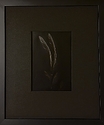twinsfan
Member
- Joined
- Oct 7, 2009
- Messages
- 6
- Format
- 35mm RF
Hi Everyone,
Silly question, but I noticed on 3 rolls of Kodak film that I've had processed there are numbers on the edge of the film. Each roll begins with 41 and ends with 55. This is on the opposite side of the film that has the frame numbering and arrows, it's interspersed with the words KODAK 400TMY-2 (in the case of Tmax 400) or KODAK E100VS (in the case of 100VS). Anyone know what those numbers refer to?
Silly question, but I noticed on 3 rolls of Kodak film that I've had processed there are numbers on the edge of the film. Each roll begins with 41 and ends with 55. This is on the opposite side of the film that has the frame numbering and arrows, it's interspersed with the words KODAK 400TMY-2 (in the case of Tmax 400) or KODAK E100VS (in the case of 100VS). Anyone know what those numbers refer to?










 I could imagine others have too, specially since those were amateur cameras to a large extend.
I could imagine others have too, specially since those were amateur cameras to a large extend.